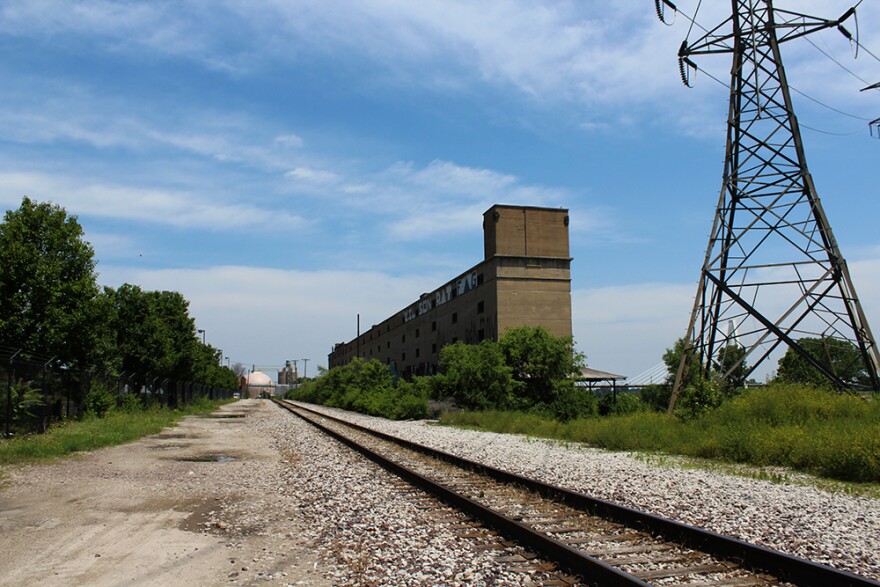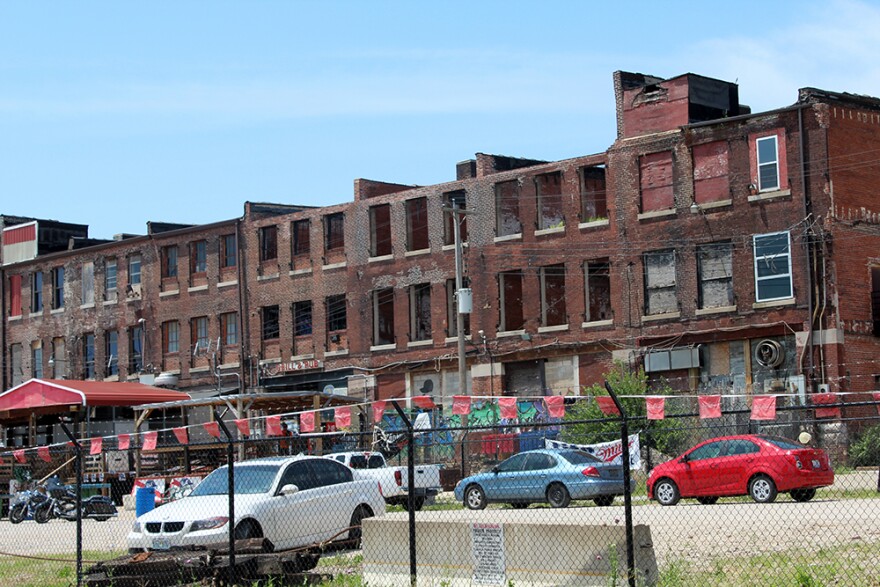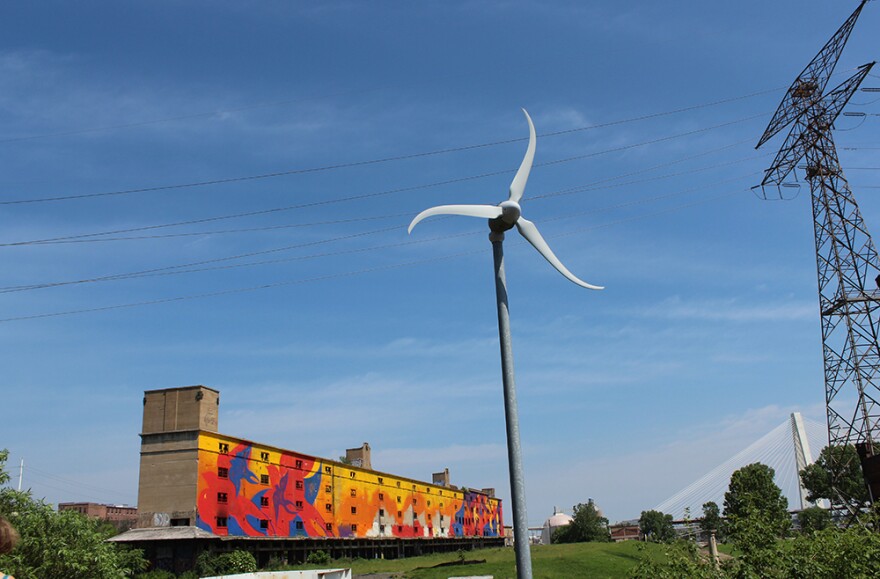The National Register of Historic Places has four listings within the footprint of the proposed riverfront football stadium in St. Louis. A group of preservationists wants the NFL Stadium Task Force to take a second look at their plan to demolish the historic buildings that date back as far as the 1870s.
“I think that people aren’t aware of how significant this area is,” said Lynn Josse, an architectural historian who contracts with cities and organizations to research the history of their buildings, “So much of St. Louis’ industrial history is represented in this area. I hope if any stadium plan goes through they’re able to keep existing buildings, respect that history and incorporate it into the plan.”
Paul Hohmann, an architect that specializes in historical restoration, suggested incorporating the historic buildings into the stadium construction as San Diego did when it built the Petco Park baseball stadium.
“They literally built their modern stadium around this building. It basically sits in the corner of the stadium,” Hohmann said. “They put balconies off of it and made luxury boxes out of this historic building.”
Hohmann drew up renderings of a more southern location for the new NFL stadium in February and posted them to his blog, Vanishing STL. But he said shifting the stadium location a little further north would also preserve most of the historic buildings.
“We would lose the Cotton Belt building, but that would probably be the only building we would lose,” Hohmann said, adding that the Cotton Belt’s odd shape (750 feet long and 30 feet wide) and concrete structure made it a hard sell to renovate.

Asked if anyone had responded to his suggestion to shift the proposed stadium south where existing parking and Metro options would alleviate the need for a large parking lot footprint, Hohmann said he hadn’t gotten an official response.
“But I have heard some people who know more about stadium design than I do say that they need loading facilities and access that might not work with what I’m showing,” Hohmann said.
The group noted that rumored objections to a location further north included difficulties moving railroad lines, but then voiced skepticism that had to truly be an obstacle.
Hohmann sees an opportunity for the stadium and the historic buildings to co-exist in a positive way, with the stadium bringing business to the area and the buildings providing structures to house restaurants and stores.
“One of the problems with this area is no one comes here. You build a stadium with all these people who come here, and suddenly you have a need for a Ballpark Village, and by the way, the buildings are already here for that,” Hohmann explained.
On Saturday Josse led 18 members of the Society of Architectural Historians on a tour of the proposed stadium footprint, beginning at the southeast corner of the site near O’Fallon St. and Lewis St. and winding northwestward to the corner of N. Broadway and Ashley St.

North Riverfront Historic District
Josse began the tour by pointing out tall brick buildings with hardly any windows. They resemble breweries, she explained, because they were built at the beginning of the 20th century as cold warehouses. The lack of windows helped with insulation.
“Cold storage becomes a really big industry on the north riverfront at the turn of the century,” Joss said. “(It) changes how everything is shipped and how everything is processed and it makes a big difference to consumers.”
Joss said that railroad spurs were built from building to building all across the riverfront to allow for easy transfers of goods. Many of the buildings are oddly shaped in order to fit the curves of the railroad tracks.
“As the railroads take over the area (at the turn of the last century) this becomes known more for storage and freight handling than anything else,” Josse explained. “But at the southern end we have an area that’s associated with early power generation here in St. Louis.”
Task force renderings for the proposed stadium preserve the Ashley Street Power Plant on the southern edge of the North Riverfront Historic District, but the older Laclede Power Plant building farther north will be demolished.
According to Josse the circa 1901 building is the oldest electricity generation building still standing in St. Louis.
“(The Laclede Power Co.) comes into existence in 1891, which is a really big year for electricity in St. Louis. That’s the year that the city starts subsidizing the first street lights. That’s also the year the first street cars are electrified,” Josse said.

At the Cotton Belt Depot in the middle of the proposed stadium footprint, Society of Architectural Historians President John Guenther pointed out the intricate details of the Cotton Belt shields at the top corners, and the metal lion heads supporting the concrete awning lower down.

Josse explained that the depot developed out of an idea to incentivize shipment of cotton from Tyler, Texas to St. Louis on rail lines rather than boats now that a more efficient means of packing cotton had been developed.
“This was built for the St. Louis Southwestern Railway, dedicated in 1913. It has railroads on either side,” Josse said, explaining that the long narrow shape of the building made it easy to pack freight onto train cars.
St. Louis Stamping Company Buildings

Northwest of the Cotton Belt Depot, and across the street from a pop-up tent presumably providing housing for the homeless lies a stretch of unassuming one and two story brick and frosted glass structures. Their historical origins, however, are significant.
According to Josse, the buildings were constructed between 1871 and 1913 as factory space for tin stamping brothers Frederick and William Niedringhaus. Josse said the brothers went on to invent graniteware, enamel-covered tin dishes that were lightweight and durable, before expanding into steel and moving their business to Illinois, forming Granite City as a company town.

North Broadway Wholesale and Warehouse District
The final stop on Josse’s tour was a long series of warehouse and industrial buildings bordering N. Broadway that date back as far as 1875. Today some buildings are empty; one houses well-known biker bar Shady Jack’s Saloon.

Bonus building: William Kerr Foundation
Prior to Josse’s tour, Dr. John Sweet showed the architectural historians around his green building on O’Fallon St. The building started life as the Belcher Bath house in 1894, built over a deep sulfur well. Between 2004 and 2007 Sweet spent $2 million to renovate the building and become LEED platinum certified for its green modifications, from solar panels and sun lights to wind turbines and recycled flooring.
Asked whether anyone had contacted him about selling his building with intention of tearing it down, since it is within the stadium footprint, Sweet said that a couple of people had talked to him but the plan is to let him keep his building if the stadium doesn’t go through.

“I’m not opposed to St. Louis being an NFL city and I certainly would not have the foundation stand in the way,” Sweet said. “I mean I’m not happy with how this is all being done and so on but we’ll see. I’m hopeful that if we have to move we can relocate to something that will ultimately be pretty cool.”
“If it comes to being bought, I have lawyers that will help me be fairly treated,” Sweet added.
St. Louis Public Radio reached out to the NFL Stadium Task Force, Governor Jay Nixon and Mayor Francis Slay for comment on this story, but they did not immediately respond.
Both Slay and Nixon have been adamant supporters of the propose stadium. Nixon has described the stadium as a way to revitalize a blighted area while helping to insure St. Louis maintains the $10 million annual tax base supplied by being an NFL city.
Follow Camille Phillips on Twitter: @cmpcamille.







